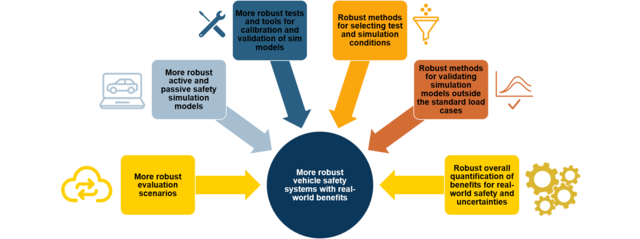Increasing road safety is a key societal challenge to reduce the number and severity of accidents on the road. One of the key aspects is to improve vehicle safety while taking into account the increasing number of road participants and transportation modes (e.g., electric scooters), the fast technology advances such as active safety systems and the increased amount of information available for occupant status monitoring and advanced driver assistance functions. AddSafety will help overcome road safety challenges to reach “Vision Zero”.
At present, vehicle safety systems are mainly tested under simplified laboratory conditions. As a result, the full range of crash configurations is usually not considered, which means that the effectiveness of vehicle safety systems is only evaluated in a subset of possible crash configurations. However, a much larger number of accident configurations would have to be considered for a comprehensive evaluation of the systems. An assessment based solely on physical testing this would inevitably lead to increased cost and effort. However, increasing the use of simulations is currently still associated with an increasing number of tests as trust in simulations alone is often limited.




